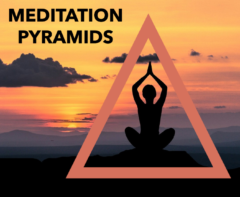Meditation has become a widely popular practice today, but have you ever wondered, where did meditation come from? This guide takes you through the origins of meditation, exploring its roots across various cultures and religions, and how it has evolved over thousands of years to become a staple for mindfulness and well-being.

The Origins of Meditation: An Ancient Practice
Meditation is believed to date back thousands of years, with origins deeply rooted in ancient civilizations. Historical evidence of meditation practices can be found in texts and artifacts from Egypt, China, and India, suggesting that meditation has been a foundational aspect of human life and spirituality for millennia.
Meditation in Early Civilizations
1. Ancient India
India is widely recognized as one of the birthplaces of meditation. The earliest written records mentioning meditation are the Vedas, sacred texts of Hinduism, which were composed as early as 1500 BCE. Ancient yogis and spiritual leaders in India practiced meditation as a way to connect with the divine and seek inner wisdom. Meditation in Hinduism laid the foundation for practices like yoga, mantra meditation, and mindfulness.
2. Buddhism and Meditation
Meditation is central to Buddhism, which originated in the 5th century BCE in India with the teachings of Siddhartha Gautama, known as the Buddha. The Buddha taught that meditation was essential for enlightenment, a path that leads to wisdom, peace, and liberation from suffering. Buddhist meditation includes methods like Vipassana (insight meditation) and Samatha (calming meditation), techniques that are still practiced worldwide today.
3. Ancient China
In ancient China, meditation practices were influenced by Taoism, dating back to the 3rd century BCE. Taoist meditation, such as Qigong and Zen (Chan) meditation, focused on harmony with nature, inner peace, and cultivating life energy, or “Qi.” These practices were later integrated into Chinese Buddhist teachings and Zen practices in Japan.
4. Egypt and the Middle East
In ancient Egypt and other parts of the Middle East, meditation practices were used in spiritual rituals to connect with deities and achieve altered states of consciousness. Though less is known about these practices, artifacts and hieroglyphs suggest that meditation was part of mystical practices to foster spiritual insight.
Meditation in Religious Texts and Philosophies
Meditation is also found in major religious and philosophical texts beyond the Vedas. For example, Jainism, a religion from ancient India, emphasizes meditation as part of its core beliefs. In the Bible, Psalms encourages contemplation and reflection, which align with meditative principles, while Sufi Islam incorporates meditation-like practices to achieve closeness with God.

How Meditation Evolved Through the Ages
As civilizations spread and mingled, meditation techniques traveled along with them, evolving and adapting to different cultural contexts. In the Middle Ages, meditation gained prominence in Christianity, particularly among monks and mystics who practiced contemplative prayer and spiritual exercises.
During the 20th century, interest in meditation expanded globally, especially as Eastern practices like Zen, Transcendental Meditation, and Mindfulness Meditation were introduced to the West. Leaders like Mahatma Gandhi, Thich Nhat Hanh, and modern psychology pioneers helped bring meditation practices to a mainstream audience, highlighting their benefits for mental health and well-being.
Why Meditation Continues to Thrive
Meditation has remained relevant through the ages due to its proven mental and emotional benefits. Science has validated its effectiveness, showing that meditation can reduce stress, improve focus, and promote emotional well-being. From its ancient roots to its place in today’s wellness routines, meditation offers timeless techniques that continue to support inner peace, self-awareness, and spiritual connection.
FAQs on the Origins of Meditation
1. Where did meditation originate?
Meditation is believed to have originated in ancient India, with early practices documented in the Vedas. It then spread across Asia, the Middle East, and beyond, influencing various cultures and religions.
2. Who was the first to meditate?
While it’s difficult to pinpoint the very first practitioner, historical evidence suggests that ancient Indian yogis and early followers of Hinduism practiced meditation. Meditation was also integral to the teachings of the Buddha, who emphasized it as a path to enlightenment.
3. How did meditation become popular in the West?
Meditation gained popularity in the West during the 20th century, thanks to increased interest in Eastern philosophy, the work of influential spiritual leaders, and the recognition of meditation’s health benefits.
In summary, meditation is a practice that transcends time and culture. Originating in ancient India and spreading throughout Asia and beyond, meditation has evolved over the centuries into the diverse set of practices we know today. Its enduring appeal lies in its ability to nurture the mind, body, and spirit, making it as relevant today as it was thousands of years ago.

